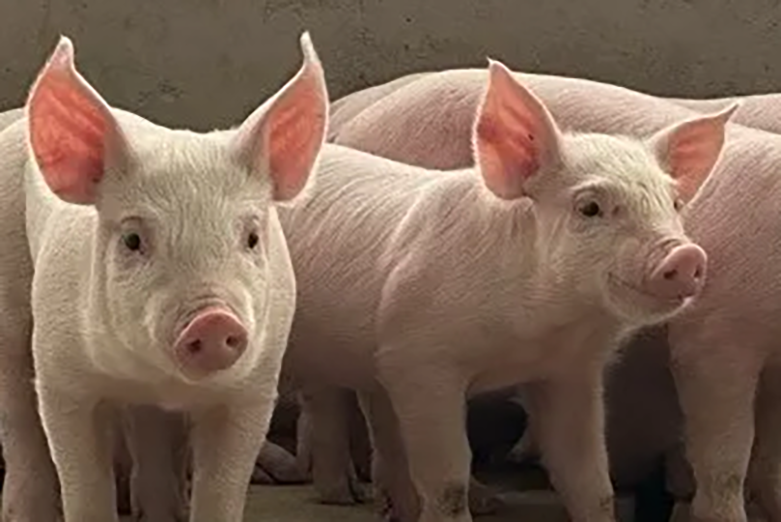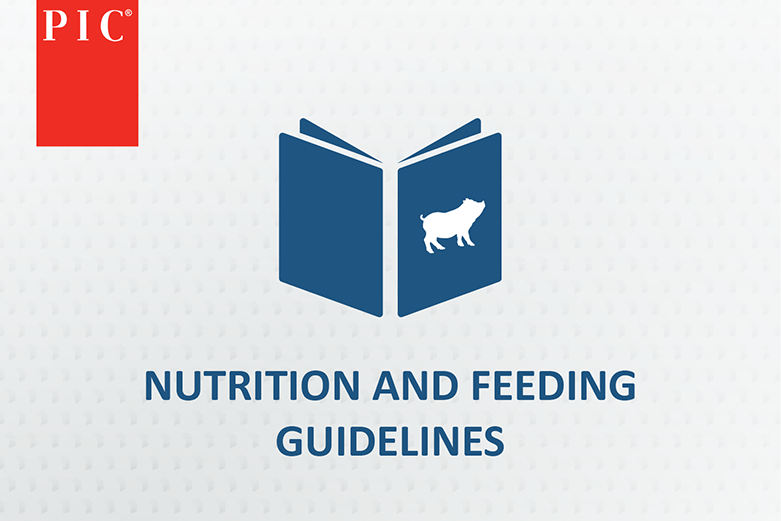Ideal body conditioned sows are desired because they will maximise your herd performance and have a greater chance to complete 5 parities compared to thin or fat sows. A sow feeding program needs to be implemented gradually and smoothly to avoid sudden changes in body condition during gestation. In this article, our nutrition and reproduction experts focus on five main steps to execute a successful sow feeding program.

Body Condition Assessment
PIC recommends obtaining body condition measurements using calipers at these three time points:
- Weaning
- Pregnancy check (~30 days)
- 90 days in conjunction with health procedures. If group-housed, visual observation at 90 days
- Farrowing

PIC does not recommend categorising and feeding gilts by body condition. Body condition assessment is ideally done with two people: one to assess and mark and the other to adjust feeders and record data. Try to do this in the morning once feed is dropped and the sows stand.
Breeding Choices and Quality Control
Body condition management starts at the first breeding. To start these gilts off strong, ensure gilts meet the following four criteria before breeding:
- Age at puberty: 1+ recorded heat by 195 days of age
- Number of estruses at first breeding: Breed gilts on at least 2nd detected estruses
- Age at first breeding: Breed gilts between 200-225 d of age
- Body weight at first breeding: Breed gilts between 135-160 kg body weight
- PIC does not recommend the use of calipers on gilts prior to their first farrowing. Instead, try a flank-to-flank tape or a heart-girth tape to assess weight at first service
If sows are extremely thin (below the thin level) at weaning or rebreeding, consider not breeding them. If they are P3 or below, consider skipping a heat. If sows are extremely fat (over the caliper fat label) at weaning or rebreeding, review their performance records to identify reproductive issues. Consider not breeding them if they are P5+ and are not needed to meet breeding targets.
Weaning and Breeding Row Organisation
- When moving sows out of farrowing to the weaning area, group P2 and thin sows to facilitate:
- Wean to service interval
- Boar exposure
- Feeder adjustment
- When moving weaned sows to breeding, or bred sows to gestation, group sows by body condition to facilitate:
- Subsequent body condition assessment
- Feeding time stress
- Body condition recovery of thin females
Feeder Adjustment and Calibration
Adjust feeding levels immediately after body condition assessment.
- Adjust feeder settings at the same time as the caliper is used based on your nutritionists’ recommendations.
- Visit PIC’s recommendations on feeding levels for body condition management.
- Improper feeder adjustment is one of the most common opportunities at farms.
- ESF should modify the feeding curve in the system.
- Routinely adjust feeders properly and allocate correct amount of feed by body condition.
- Never feed gilts below the PIC recommended base level regardless of their body weight at breeding.
Record Body Condition Data

- Record all body condition data, and clearly mark sows based on the observed body condition.
- Make and execute the schedule to reassess thin sows, and once their body condition has recovered to ideal, feed them at the base level.
Please note: Although body condition management is the best way to implement a successful sow feeding program, it will take at least one full cycle through the farrowing house to bring the herd into ideal condition.




